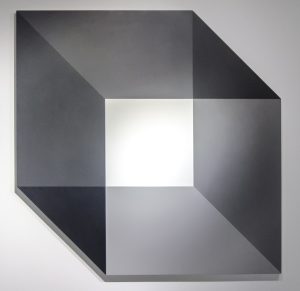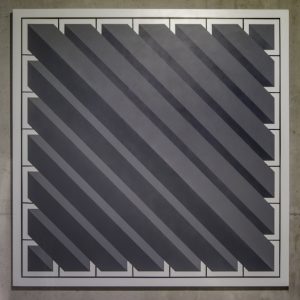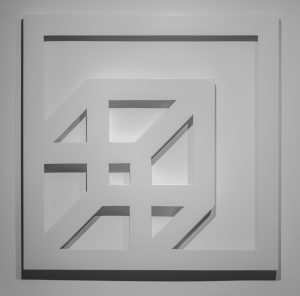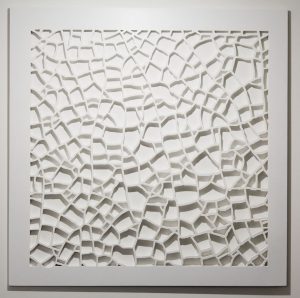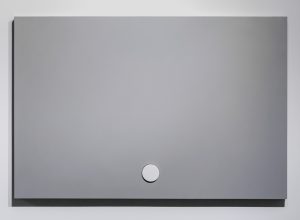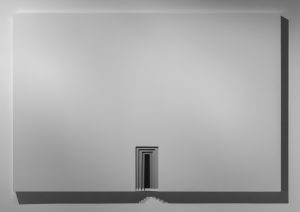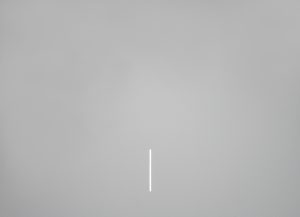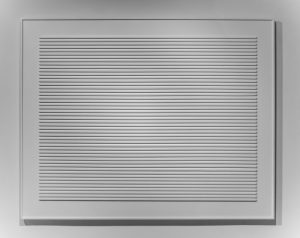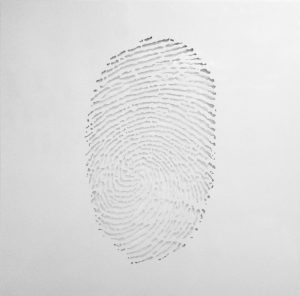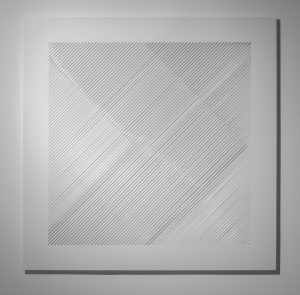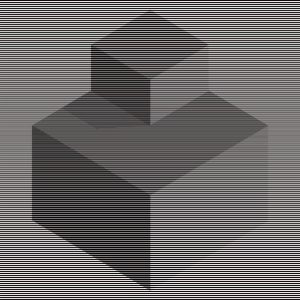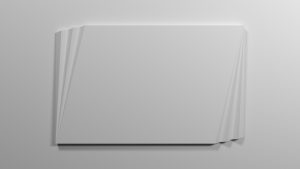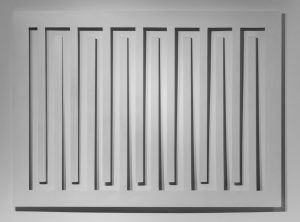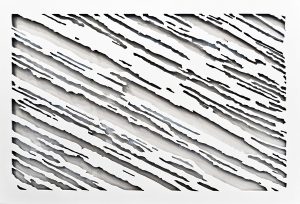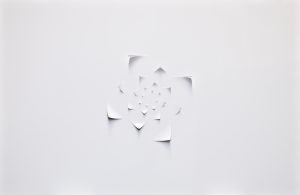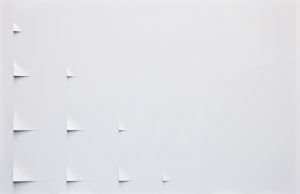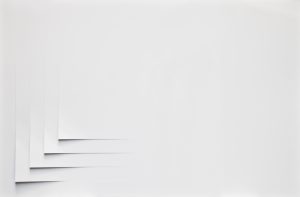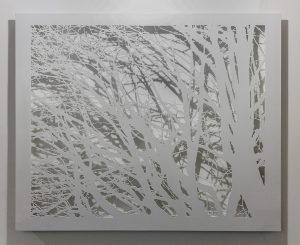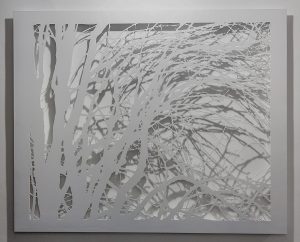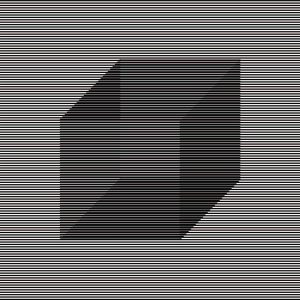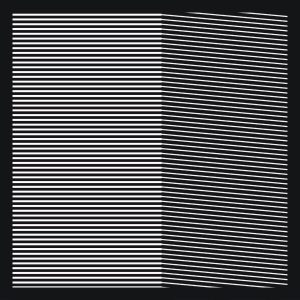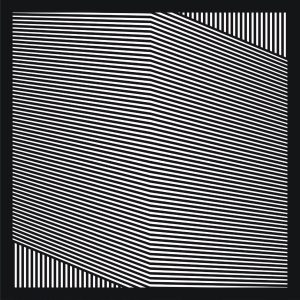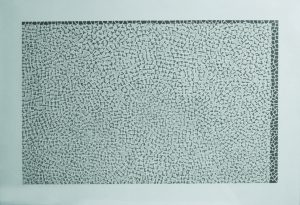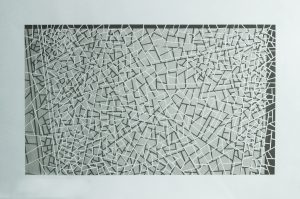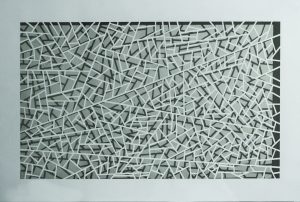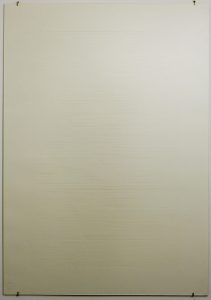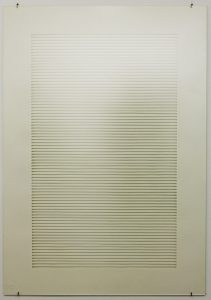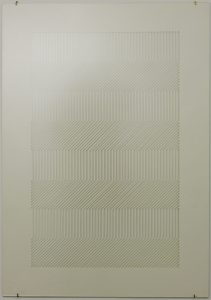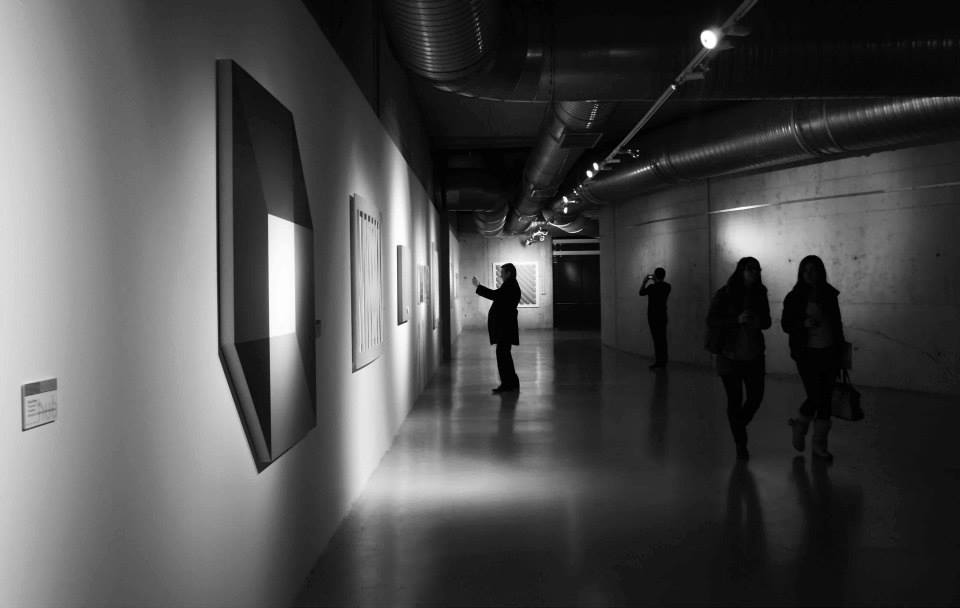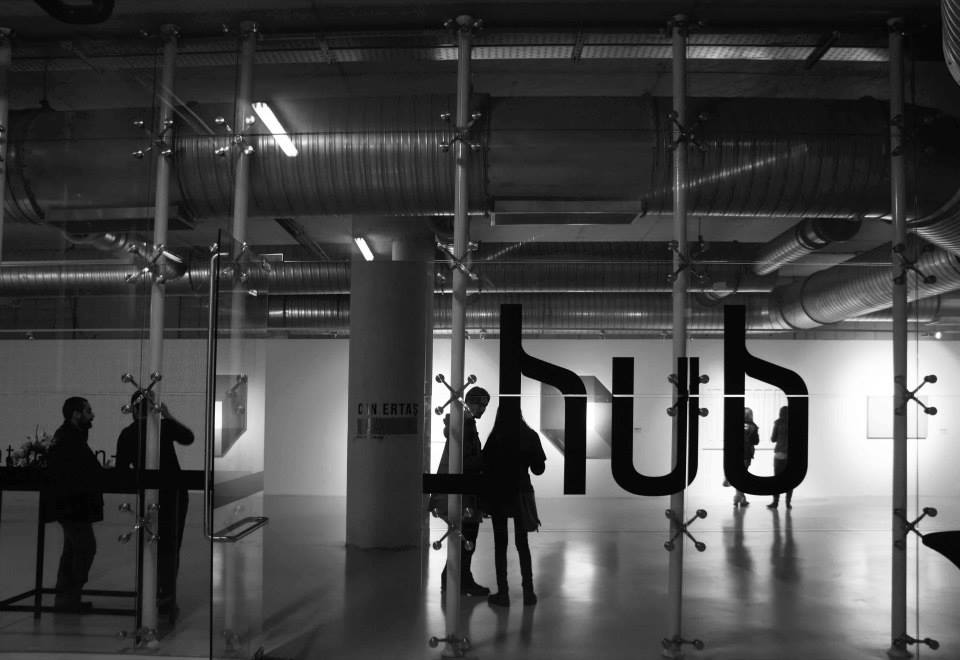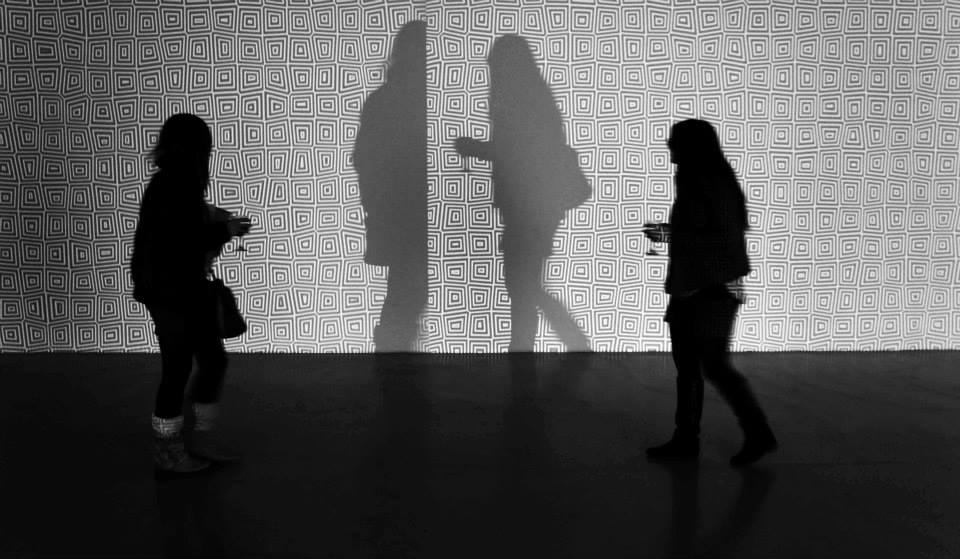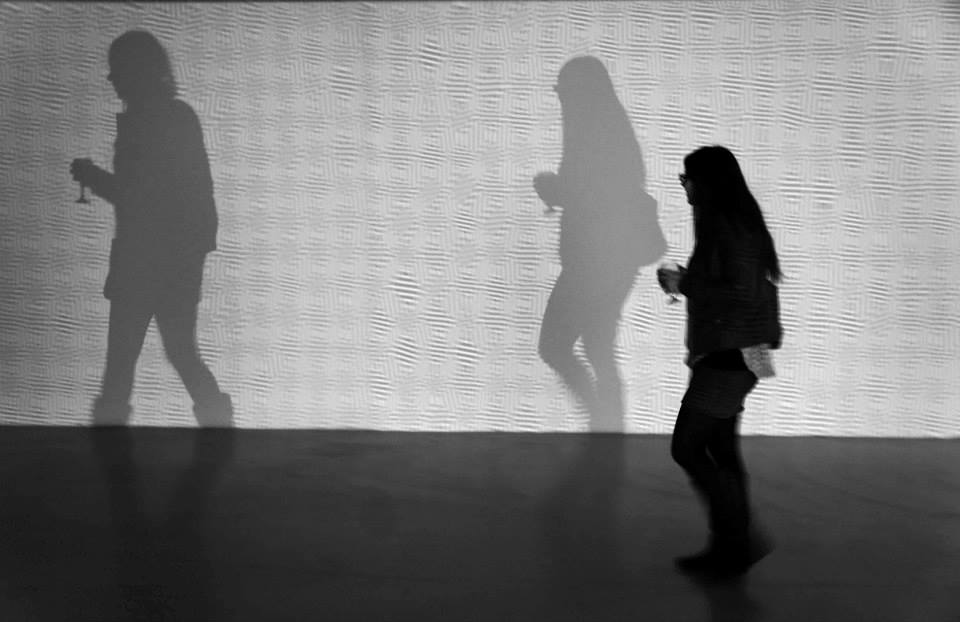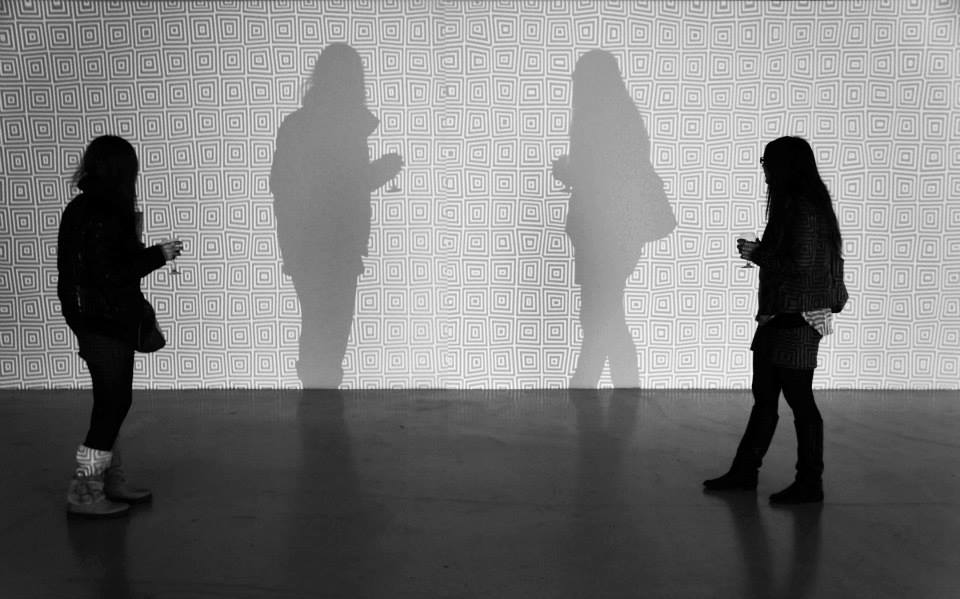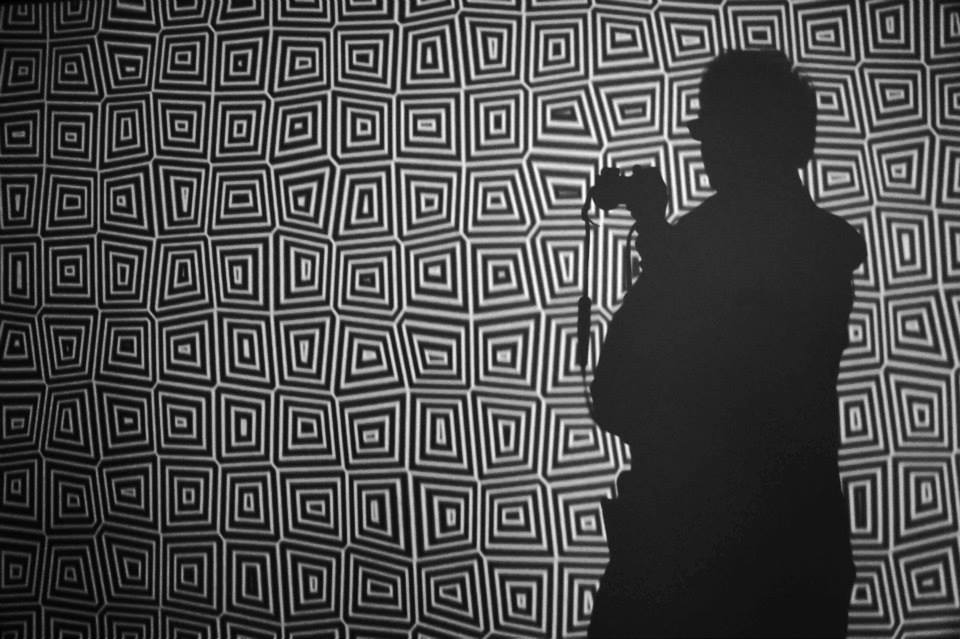
Artworks
As an artist, I explore form, texture, and light through materials like MDF and laser-cut paper. My work focuses on abstraction and minimalist structures, inviting viewers to consider space and physicality.
In solo exhibitions such as Linear Movement at CerModern and Artificially Flavoured at Sanatorium, I merge structural precision with conceptual depth. My approach involves techniques like electrostatic paint on aluminum and laser-cutting, creating immersive works that challenge perceptions of reality. Exhibiting in Istanbul, Paris, and Seoul has allowed me to share these explorations of dimension and form internationally.
Solo Shows
Linear Movement
Movement is the change in position. If an object changes its location relative to a point considered stationary, it means the object is in motion. Linear motion occurs when movement happens along a vector. These vectors are the building blocks of geometry. By bringing together four lines under necessary conditions, one can create a quadrilateral or trapezoid. These geometric shapes form the basis of forms. However, there is no exact counterpart for these shapes in nature; we assume some objects resemble them. For example, we consider a soccer ball to be a sphere because its shape most closely resembles one. This assumption is both a convenience provided by our perception and a method we need to establish common ground universally.
Before connecting this discussion to the works in the exhibition, it is essential to talk about form in the field of plastic arts. The roots of painting, sculpture, and all plastic arts begin with the study of nature. It is understandable that the term “to paint” requires a reference—whether it’s a model, still life, or landscape. Although the subject may change, the method remains the same. The artist conveys knowledge gained primarily from impressions, presenting us with forms that emerge from the world of beings, regardless of the different stories told. Even in depictions of deities, we encounter humanoid or relatively familiar appearances.
I am faced with a series of questions: How can I distance myself from nature in my works? What kind of formal space exists beyond the world of beings? What types of forms can be considered abstract?
Finding answers is not easy, but I can mention some clues. Geometry, for instance, has been quite helpful in creating my works. Although these forms, like squares and cubes, are familiar, their inherent perfection is tied to a certainty that can never truly exist. A square, for example, is so defined that it can only exist as a definition. Even when using the most precise tools, it is impossible to achieve the certainty of its definition when trying to cut a square from a sheet of paper. These basic shapes can only exist as definitions or on a computer. However, despite my production being on a computer and through computer-controlled machines, the differences between what is indicated and what is perceived are so profound that they cannot be captured. Here, our perception comes into play, matching what we see with previously stored information in memory, making it seem equivalent to the mentioned form. This impossibility directly interferes with my production methods and leaves me with no other options. While industrial production techniques yield the closest results, they also eliminate the factor of craftsmanship that cannot be avoided.
As a result, my attempts to escape nature’s influence in my works have led to changes in my production techniques. Therefore, the outcomes have begun to change not only in terms of form but also in the techniques they require. The existence of forms generated with computer assistance, without needing my practical skills, may provide some answers to the questions I previously encountered.
12th Jan – 11th Feb 2014 / Sanatorium
Is artistic production possible by taking its source of inspiration from the production itself?
The basis of my works started to take shape in the company with this question. When thinking about how one can produce art without giving any reference to a being excluding itself, I began to challenge my visual memory “pollution” as well as reflect on what an image-object as a non-illustration of any being is. In this context, I tended toward the question “how is it to be a non-illustration of any being?” While contemplating this, I started to admit that this is not within the bounds of possibility and to approach the answer of the question as “being purified from the image”. With this idea, my works have become extremely plain and abstract while some basic geometric forms as well as some structures which I encounter around me and generally use without much intervention started to dominate my work. After this point, I was able to produce my works almost without touching them and without establishing the relationship of a painter with the canvas. It was as if my works which in general do not need me at all except for a few simple drawings produced themselves. At this point, the question occupying my mind arised as which role I would attribute to my existence in this position.
I prefer to leave this question to the process instead of answering it. However, I can say that the main issue in my works is about what these works are and how we should see/read them.
Basically, the point I am emphasizing indicates a problem not only concerning my works but the whole artistic production. Therefore, we can transform the former expression into the following question: How shall we read an artwork? Certainly, it is not possible to answer this question from a single point of view, however, I can make a statement about my production as follows: None of the works that you see in this exhibition is anything else than itself. There is no other and more qualified semantic construction lying behind the surface or form. And even if they connote something for you, none of them is anything else than an object – some of them three-dimensional and some of them applied on the surface – produced with certain industrial techniques.
These creations present themselves to the audience solely as works. Elements such as space, composition, volume, surface, etc. constitute the main theme of my works. Therefore, the art objects that I create have the characteristics of not being a tool made use of for creating an image or a form but they constitute the main point of emphasis. My aim is not to paint images so masterfully that it will make the physical being of the painting on the surface forget but to underline what painting or sculpture is. Hence, as a result of creating the forms to be applied through interventions that will break the two-dimensional integrity of the surface, there emerge works that might neither be defined completely as painting nor sculpture. Furthermore, my preference for not using color in my works is aimed at integrating them with the venue by diverging from narrative, descriptive, and illusional elements. In my opinion, artworks cannot be considered separately from the venue and the conditions of the venue in which they are exhibited while there should be a common language and harmony in an exhibition. In this context, my works, each with a singular existence, constitute an organic bond within a certain setup in the same venue. All of the works that you see in this exhibition have been produced aiming at unity for this exhibition.
Translated by Güher Gürmen
Group Shows & Projects
2014 “[ ]” PG Art Gallery, Istanbul
2014 “Hyphologie” Sanatorium, Istanbul
2012 “Encounters: Turkish Contemporary Art in Korea” Seoul / Korea
2013 “Record” Mixer, Istanbul
2013 “Rank 1+1” Plateforme Paris, Paris / France
2011 “Ellerine Bak” PG Art Gallery, Istanbul
2011 “Abuse” Sanatorium, Istanbul
2011 “By Default” Sanatorium, Istanbul
2010 “Inventory” Sanatorium, Istanbul
2010 “For What?” Sanatorium, Istanbul
2009 “City and Art” Samatya Project (Enstalasyon-Video) Sanatorium, Istanbul
2009 “1. International Artist Initiatives Istanbul Meeting” (Enstalasyon), Istanbul
2009 “Past Is Over, Now Pay The Bill” Daire Gallery (Video), Istanbul
2009 “City and Art” Istanbul Modern (Enstelasyon-Video), Istanbul
2008 “İşgale Karşı Sanat” Karşı Sanat Çalışmaları, Istanbul
